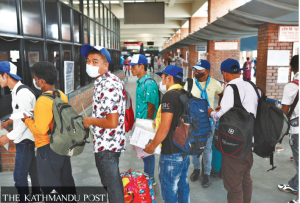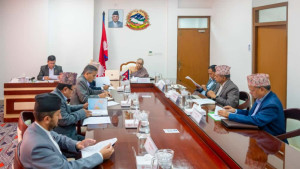Editorial
Beyond cattle and grass
Despite initial hiccups, the minimum work programme has great potential to address a post-pandemic job crisis.
The Prime Minister Employment Programme (PMEP) has so far been a dud. In the fiscal year 2018-19, it could provide only 13 days of work on average to around 176,000 individuals. In several cases, local units have been found to be lacking employment coordinators who are responsible for executing the project. This resulted in the allocated budget remaining unspent. What's more, several local units could not complete their projects, not to speak of those who could not even initiate their schemes in the first place.
Officials involved with the programme concede that they have failed to reach the programme’s target due to the delay in its initiation and the delayed dispatch of the budget. But failing is not an option as its promises and responsibilities are all too significant for those who are down and out. The programme, which was launched in February 2019 with the aim of providing a minimum 100 days of guaranteed work to the needy, can be a lifeline to the unorganised workforce in the country. And so, despite the initial hiccups, it must go on. The only way out is to look back at what worked and what did not, and make amendments to its modus operandi to ensure that it gets better and better.
This year is going to be even more challenging owing to the sheer spike in the number of the unemployed. A task force set up by the government to look at the job scene in Nepal in the wake of the Covid-19 pandemic said that the country would need 1.5 million jobs to avoid an unemployment crisis. The fact that the pandemic shows no sign of wavering means that the numbers could go further up. But the government in its budget aims to create only 700,000 jobs and relies heavily on the PMEP to fulfil that demand. Accordingly, it has doubled its budget for the fiscal year 2020-21 to Rs11.6 billion. But that is not going to be enough. The government would need to allocate a stimulus package to meet the additional requirements, just as the Indian government recently allocated an additional IRs400 billion stimulus package for the Mahatma Gandhi National Rural Employment Guarantee Act (MGNREGA) programme.
For optimal functioning of the employment programme, the government must, apart from allocating more funds, focus on designing projects aimed at developing durable infrastructure. The programme has already faced enough criticisms as one that gets the sukila-mukila to take up tasks as mundane as chasing stray cattle and cutting grass. The programme cannot continue to falter in this regard. Provincial and local levels have a big role to play in implementing the programme to cover the hinterlands, keeping track of those who have been rendered jobless due to the Covid-19 pandemic or have returned home after losing employment abroad. Moreover, the programme is used as an opportunity to provide jobs to individuals close to political parties. For a change, the government must keep the programme free of political interference and favouritism, and instead use it as a platform to provide a demand-based employment scheme for the most vulnerable sections of society.
***
What do you think?
Dear reader, we’d like to hear from you. We regularly publish letters to the editor on contemporary issues or direct responses to something the Post has recently published. Please send your letters to [email protected] with "Letter to the Editor" in the subject line. Please include your name, location, and a contact address so one of our editors can reach out to you.




 19.12°C Kathmandu
19.12°C Kathmandu














